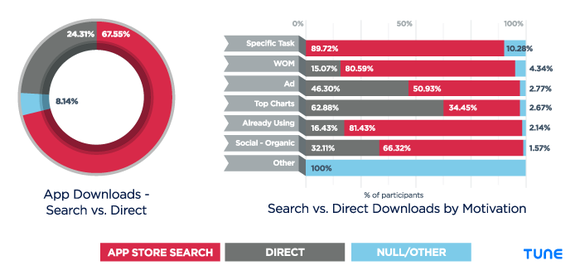Advertising campaigns are an effective and scalable way of acquiring new leads for your app, but the costs can leave you with little to invest in other marketing channels – especially if you're an independent developer or emerging startup.
Fortunately, there's a multitude of ways to generate buzz and garner new users that won't have you digging deep. Here, we've compiled a list of 15 creative and cost-effective ways for you to promote your app.
1. List your app in alternative stores.
Google Play and Apple's App Store may be the heavyweights in the marketplace, but there are benefits to listing your app in alternative stores – higher commissions, exposure to niche audiences, and the opportunity to be featured in curated lists. Some popular third-party stores include GetJar, Aptoide and the Amazon App Store.2. Apply for awards and contests.
Mobile app competitions and awards events, like the Apple Design Awards and the TechXLR8 Awards, offer participants a shot at free press. Even if your app doesn't win an award, you'll benefit from exposure and feedback from the developer community.3. Don't neglect ASO.
Since app stores are the top app discovery method, app store optimization is essential to promoting your app in this competitive environment. Start by using lower difficulty, long-tail keywords in your app's title and description, and target more difficult keywords with higher traffic as your app gains traction. Other ASO factors include number of downloads, ratings and reviews.4. Create an eye-catching app icon.

When it comes to your app icon, don't skimp on professional design. For maximum visibility, go with a simple shape and one or two contrasting but complementary colors. Check that your design looks attractive at multiple resolutions and against a variety of backgrounds. If possible, the icon should convey the purpose of the app in an instantly recognizable way.
5. Send cold emails.
There's a reason why cold emails are a pet marketing strategy of tech startups – they work! To get started with your own outbound campaign, compile a list of bloggers and editors whose readers would find your app useful. Or, assemble a list of ultimate-resource posts, like "100 of the Best Tools for Productivity Geeks," and pitch your app to the editor as a relevant resource.6. Use Pinterest.
For its fans, Pinterest is the go-to source for new ideas, motivation and inspiration. Meanwhile, app developers have caught on to its effectiveness as a channel for leads and traffic. For instance, MyFitnessPal has a variety of boards related to a healthy lifestyle, including healthy recipes, weight loss tips and workout inspiration.7. Build a niche community.
Creating your own social media community, like a Facebook group or Google+ community, is a great way to expand your reach and answer any questions members have about your app. Rather than using your administrator status as an opportunity to spam group members, play the long game: Invite participation from the community, and be genuinely helpful in return.8. Create how-to videos.
Four times as many customers would rather watch a video about a product than read about it, so if you're not already using video to market your app then it's a great time to start. Consider starting a YouTube channel to showcase the preview video for your app, along with additional tutorials demonstrating your app's features and benefits.9. Collect user email addresses.
Whenever possible, collect user data and email addresses so you can notify subscribers of app updates or offer discounts on new features. Make the opt-in experience as user-friendly as possible by using progress screens and pre-filled text.10. Offer a referral program.
Referral programs add a viral element to your marketing and are a reliable channel for acquiring new users at a low cost. Promote your referral program with in-app messages, SMS, social media, push notifications, and email.
11. Build pre-launch buzz.
Generating buzz in the weeks leading up to launch is the best way to increase your odds of a successful launch. Here are just a few ways you can build buzz:- List your app on sites like PreApps and BetaList.
- Guest blog on tech publications or niche-specific websites.
- Give influencers pre-launch access in exchange for a review.
- Submit press releases to app review websites.
12. Create an ultimate guide for your industry.
Hone in on a common desire or main point in your target market and create a 101-style blog post or ultimate guide to drive traffic to your website and help promote your app. You can also get creative and repurpose your guide as a SlideShare presentation, video tutorial, podcast, or Medium post.13. Link to the app in your email signature.
Think about how many emails you send on a weekly basis – your email signature is prime real estate for promoting your app. Make sure to include a brief description of the app's purpose and a link to its listing.
14. Start a blog.
Generate new leads for your app by blogging about topics that are educational or entertaining to your target audience. As an example, check out Todoist's blog – the task management app caters to its audience by publishing content related to productivity and personal development.15. Create a shareable landing page.
The best landing pages usually feature a simple design, a benefit-focused headline, and a call to perform a desired action, such as viewing a demo video. You should also include:- Social sharing icons
- Additional info and screenshots
- An opt-in form
- Testimonials from users or early adopters
- A link to the app's listing





